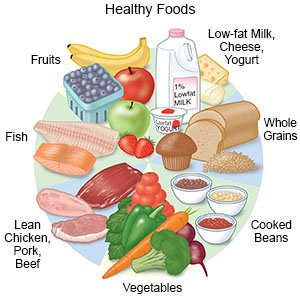Spina Bifida in Children
Medically reviewed by Drugs.com. Last updated on Apr 6, 2025.
What is spina bifida?
Spina bifida is a neural tube birth defect that prevents your child's vertebrae from forming correctly. The nerves in your child's spinal cord may be exposed, or form outside the vertebrae or skin.
What are the types of spina bifida?
Spina bifida has several types. Each type may affect your child in a different way. Your child may have nerve or brain damage. These increase his or her risk for learning disabilities, fluid buildup in the brain, or seizures. He or she may have delays in education, self-care, and social skills. He or she may need to use a wheelchair, cane, or crutches. He or she may also have problems controlling his or her bladder and bowels.
- Spina bifida occulta is the most common and mildest form of spina bifida, and may not cause symptoms. It occurs when one or more vertebrae do not form correctly.
- Meningocele occurs when some of your child's vertebrae do not close. Part of the spinal lining and fluid form outside of the vertebrae. It may be open or covered by skin.
- Myelomeningocele is the most severe type. It occurs when vertebrae do not close and spinal cord forms outside the vertebrae. This mostly happens in the lower back.
What are the signs and symptoms of spina bifida?
- A mark or patch of hair on the back, a dimple, or a lump in the skin on the lower spine
- A bulge or sac that sticks out from the spine or base of the skull
- A hole in the skin above the spine
- Muscle weakness or numbness in the buttocks, legs, or feet
- Deformed spine or feet, such as a club foot (a foot that points inward, and forms a shape like a golf club)
- No ability to control urinating or having a bowel movement
- Trouble eating or swallowing, or acid reflux
- Seizures
How is spina bifida diagnosed?
Your child's healthcare provider may be able to diagnose spina bifida before your child is born. This is done through blood tests, amniotic fluid tests, and ultrasound during pregnancy. Your child's healthcare provider will examine your child just after birth to check his or her strength and response to touch. Contrast liquid may be given to help your child's spine and skull show up better in pictures. Tell the healthcare provider if you or your child had an allergic reaction to contrast liquid.
- CT scan pictures may be taken of your child's spine and skull.
- MRI is a scan that may be done during your pregnancy or after your child's birth. An MRI uses a powerful magnet and computer to take pictures of the inside of your child's spine and skull. Do not enter the MRI room with anything metal. Do not let your child enter with anything metal. Metal can cause serious injury. Tell the healthcare provider about any metal in or on your body or your child's body.
How is spina bifida treated?
Your child may not need treatment if the spina bifida is mild. More severe forms may need the following:
- Spinal surgery may be done to close or place your child's spinal cord back inside the vertebrae. Surgery will most likely happen within a day of your child's birth. Your child may also need other surgeries to repair body parts, such as a clubbed foot or severe spinal curves.
- Ventricular shunting is surgery to place a shunt inside your child's brain. A shunt is a tube used to prevent spinal fluid buildup inside the skull. The shunt will run from your child's brain down to his or her abdomen.
How will my child's condition be managed?
Your child may need more treatment with nerve, bone, or kidney specialists. Some treatment may last for the rest of his or her life. Ask your healthcare provider for more information about the following:
- Physical therapy teaches your child exercises to help improve strength, movement, and balance in the spine and joints. Physical therapy may also decrease pain.
- Support devices include crutches, braces, a walker, or a wheelchair. Your child may need one or more of these for severe spina bifida.
- Medicines may be given to help prevent seizures and infections. Your child may also need medicine to help him or her urinate.
How can I care for my child?
- Care for his or her bladder and bowels. Clean your child's diaper area well to avoid infection or other health problems. You may need to learn how to insert a catheter so your child can urinate. Ask for more information about how to catheterize your child. You may also have to give your child an enema or stool softener so he or she can have regular bowel movements. This will help you predict and prepare for bowel movements.
- Protect your child's skin. Help your child move or change positions often if he or she lies down or sits for long periods of time. This will help prevent skin sores. Check your child's skin often for redness or blisters.
- Avoid all products that contain latex. Your child may become allergic to latex. Avoid latex to prevent an allergic reaction.
- Help prevent obesity. Children with spina bifida are at risk for obesity. Feed your child healthy foods, such as fruits, vegetables, whole-grain breads, low-fat dairy products, beans, lean meats, and fish. Ask if he or she needs to be on a special diet.

- Teach your child how to care for himself or herself. Teach him or her how to bathe, get dressed, and put on braces when he or she is old enough to understand. Help him or her learn to self-catheterize and manage bowel movements when he or she is between 3 and 5 years old.
What increases the risk for spina bifida?
- Low folic acid levels during pregnancy
- Another child or family member with spina bifida
- Obesity or diabetes before or during pregnancy
- Hyperthermia (high body temperature) caused by a fever, or sauna or hot tub use while pregnant
- Certain antibiotics or antiseizure medicines used during pregnancy
- Alcohol use during pregnancy
How can spina bifida be prevented?
Talk to your healthcare provider if you are a woman of childbearing age and you want to have children. The following are general guidelines to help prevent spina bifida:
- Take 400 to 800 micrograms (mcg) of folic acid each day. You can get folic acid from prenatal vitamins, a multivitamin, or folic acid supplements. You may need up to 4,000 micrograms (mcg) each day if you have had a child with a neural tube defect. Your provider will tell you how much to take. If possible, start taking folic acid 1 month before you become pregnant. Take folic acid for the first 2 to 3 months (8 to 12 weeks) of pregnancy.

- Do not drink alcohol during your pregnancy. No amount of alcohol during pregnancy is safe. If possible, stop drinking before you become pregnant. Talk to your provider if you need help stopping.
- Reach or maintain a healthy weight. Ask your provider what a healthy weight is for you. Your provider can help you create a safe weight loss plan, if needed. Try to reach a healthy weight before you become pregnant. Your provider will tell you how much weight to gain during your pregnancy. Your provider can also help you create healthy meal and exercise plans to use during pregnancy.
- Talk to your provider before you take medicines during pregnancy. Some medicines used during pregnancy increase the risk for spina bifida.
- Do not sit in a sauna or hot tub while you are pregnant. A high body temperature during pregnancy increases the risk for spina bifida.
Where can I find support and more information?
- Spina Bifida Association
4590 MacArthur Blvd.
Washington , DC 20007-4226
Phone: 1- 800 - 621-3141
Web Address: http://www.spinabifidaassociation.org
Call your local emergency number (911 in the US) if:
- Your child has new or worse seizures.
- Your child has trouble eating, swallowing, or breathing.
When should I seek immediate care?
- Your child is limp, more tired than usual, or has a weak cry.
- Your child has redness or swelling along the path where a shunt was placed.
- Your child has a headache or nausea, or he or she vomits more than 1 time.
- Your child has vision changes.
- Your child's head suddenly gets bigger.
When should I call my child's doctor?
- Your child has new skin redness, sores, or blisters.
- Your child is less able to move, crawl, or walk.
- Your child loses his or her appetite or vomits after he or she eats.
- Your child has new or worse pain in his or her back or legs.
- Your child has new or worse trouble urinating or having a bowel movement.
- Your child's behavior changes, such as increased tiredness, clumsiness, or loss of attention.
- You have questions or concerns about your child's condition or care.
Care Agreement
You have the right to help plan your child's care. Learn about your child's health condition and how it may be treated. Discuss treatment options with your child's healthcare providers to decide what care you want for your child. The above information is an educational aid only. It is not intended as medical advice for individual conditions or treatments. Talk to your doctor, nurse or pharmacist before following any medical regimen to see if it is safe and effective for you.© Copyright Merative 2025 Information is for End User's use only and may not be sold, redistributed or otherwise used for commercial purposes.
Learn more about Spina Bifida
Treatment options
Symptoms and treatments
Further information
Always consult your healthcare provider to ensure the information displayed on this page applies to your personal circumstances.
